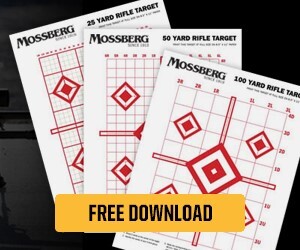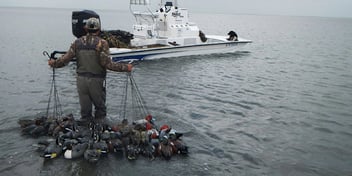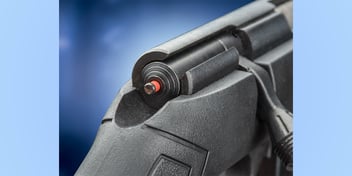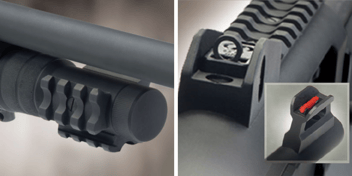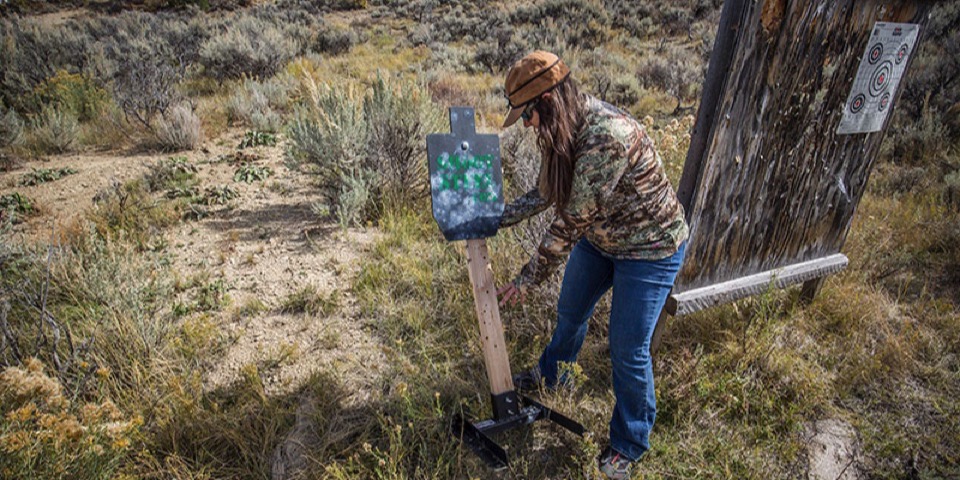
As a lifelong hunter, I followed the traditional path into the field. My father took me hunting from an early age and introduced me to shooting sports, first with an air gun, then a rimfire 22, and finally with a .30-06 passed down from my grandfather. It was with that sporterized Springfield rifle, built-in 1943, that I killed my first two elk and an unquenchable passion for outdoor adventure and big game hunting was born.
Not everyone follows the same route into shooting sports, however, as more and more folks grow up without any connection to hunting, chances are that interest in hunting arises out of the organic, hunter/gatherer food movement rather than familial inheritance. My wife, for instance, had never fired a gun in her life, much less gone deep into the woods in search of game, until we’d been married for a decade. She’d never really expressed an interest in hunting, either, until I started taking our boys, and we came back with cherished memories—and wild meat.
A dozen rounds of elk burgers, a few whitetail tenderloins, and the obvious joy we exuded after each time spent in the wild were enough to pique my wife’s interest. On her initiative, she signed up for a hunter’s safety course and asked if I’d help her get tags for the following elk season.
As excited as I was, I also realized how important it would be to make her first experience success—and to define success the right way. So I did my research, reflected on some of the great—and not so great—training I’ve received in the past, and asked other female hunters what made the biggest impact in their hunting journey. Good or bad, our first experience with any new endeavor forms the foundation of how we’ll view that activity for years to come, so it’s important to get it right from the start. Whether you’re introducing a spouse, friend, sibling, or relative to shooting sports, here are eight great hunting tips for introducing female hunters to the field.
Rifle Fit
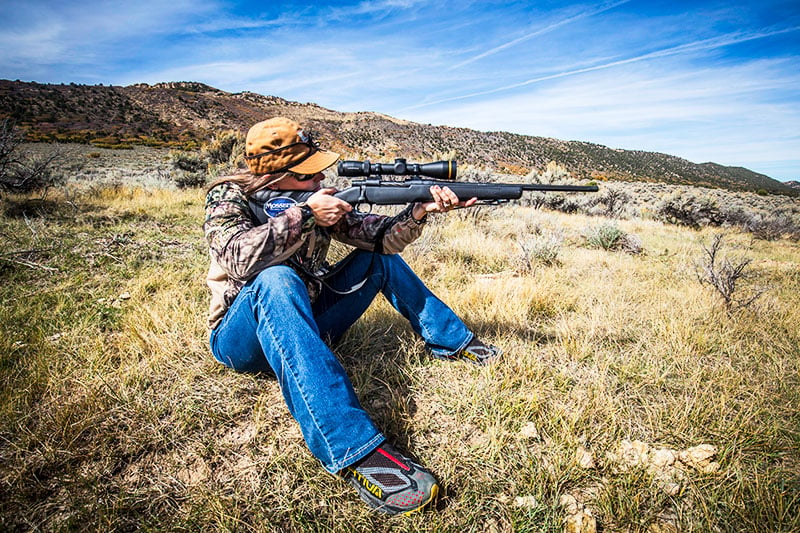
As a smaller statured man of 5 feet, 8 inches, most rifles on the market today don’t fit me that well. Length of pull is generally in the 13.25-inch ballpark, whereas an ideal fit for me is between 12.75 and 13 inches. It may seem like an insignificant difference, but even a quarter of an inch can mean the difference between getting the rifle squarely on your shoulder or out on your arm where recoil is going to leave a mark. A poor fit also makes it more difficult to get a quality cheek weld and a clear view through a scope. When a rifle doesn’t fit correctly, recoil is made even more severe, and the enjoyment level goes down drastically.
I cringe when I get behind a poorly fit, high-recoiling rifle, and that’s coming from an experienced shooter. Imagine what that’s like for someone who’s never been behind a gun. As for any shooter, the rifle should be properly fit for each specific woman. Generally, this means a rifle with a shorter stock and something light enough to carry all day in the field. Don’t overlook “youth” models—I’m a grown man and find many of them much more suitable than the longer variants.
For my wife’s first hunting adventure, we tried out several rifles but ultimately landed on Mossberg’s Patriot Youth Super Bantam rifle in .308. A removable spacer allows you to set the rifle at either 12 or 13 inches, perfect for a woman, growing teen, or use between two different size shooters. The rifle is heavy enough to mitigate recoil and stabilize during shooting yet light enough for her to carry with relative ease. The Lightning Bolt Action (LBA) trigger is phenomenally light and crisp (adjustable from 2-7 pounds), which makes for great accuracy. It’s a terrific package that won’t break the bank (MSRP $384).
Mossberg Patriot Youth Super Bantam Rifle #27865
Most of all, the Patriot Bantam rifle lives up to my golden rule: Buy the female hunters in your life the level of gear you expect and enjoy for yourself. If you don’t like using sub-par gear, why would someone else? Having quality gear like the Patriot Super Bantam builds confidence and sets the tone for a lifetime of good hunting.
Caliber Selection
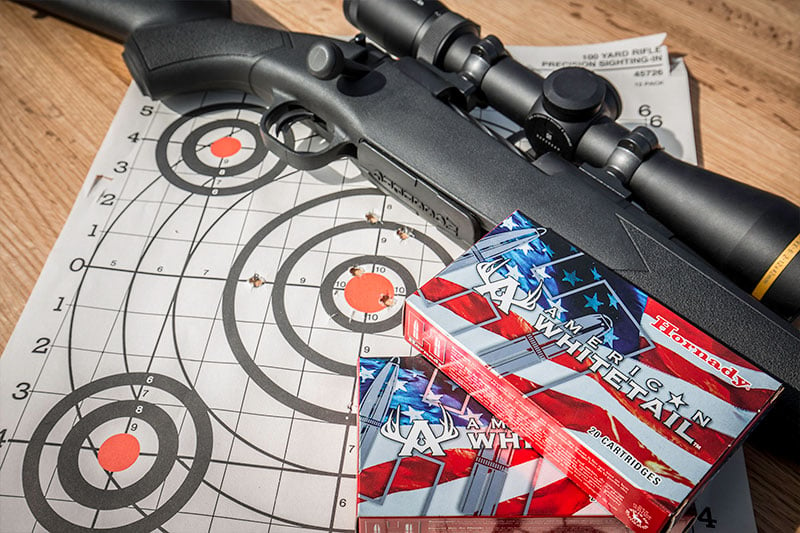
One of the biggest concerns I have with any new shooter is to determine what level of recoil they can comfortably handle. While recoil tolerance is somewhat subjective, I’ve found the .308 Winchester to be in the sweet spot between power and recoil. It’s incredibly effective on deer, elk, and black bear, and can be paired with premium hunting bullets in the 150- to 165-grain range that is designed for maximum penetration at reasonable distances (easily up to 300 yards). It doesn’t kick like most .30-06 rifles but is almost identical in ballistic performance.
If the woman in your life is particularly recoil-adverse, I’d consider using the Hornady Lite loads, which are available in .308, or dropping down to another caliber like the .243 Winchester. Some other viable options are the .270 Win., .260 Win., or the up-and-coming 6.5 Creedmoor. Any of these cartridges will handle up to an elk-sized game as long as you keep your shot distances manageable—again, inside 300 yards—which is probably a good idea for a new shooter anyway.
Adjusting Your Optic
Shooting someone else’s rifle when it’s set up for them is a bit like wearing someone else’s prescription glasses. Yes, you may technically be able to see, but it’s far from an ideal situation and probably ends in a headache. For starters, you’ll want to have the new shooter mount the rifle, say from the prone position, and then move the entire scope until the focal length matches their specific set of eyes and there’s no black around their sight picture. After you’ve locked down the scope, you’ll want to adjust the focus ring to bring the crosshair into sharp focus for them.
I would spend at least as much on my optic as I would on my firearm—that’s how important good glass is for hunting. For the lady in your life it should be no different: Use a glass that’s up to your standards. For my wife’s rifle, I attached a Leupold VX-6 2-12x40 illuminated scope (MSRP $1,559), which is perfect for close or long-range shots and has an illuminated red dot for improved target acquisition and shot placement.
The Sight In
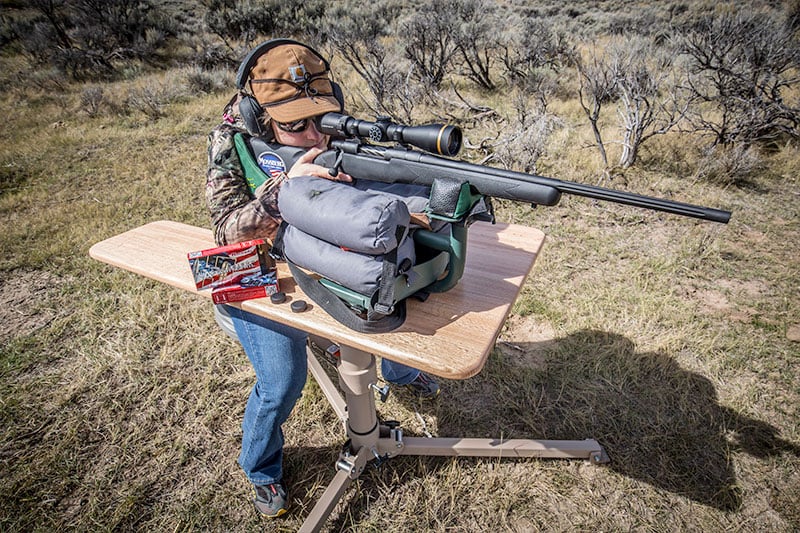
After you’ve decided on your cartridge and rifle, you’ll want to hit the range and get your gal pal acclimated with the setup. To start, I prefer shooting from a bench with a Caldwell Lead Sled. The weighted sled reduces recoil, which allows a new shooter to get familiar with the trigger press, concussion, and shot process without taking too much of a beating. A bench stabilizes the rifle and allows the shooter to focus on mechanics like proper breathing, trigger press, and follow through. As a trainer, it allows me to watch those proper fundamentals and coach when necessary.
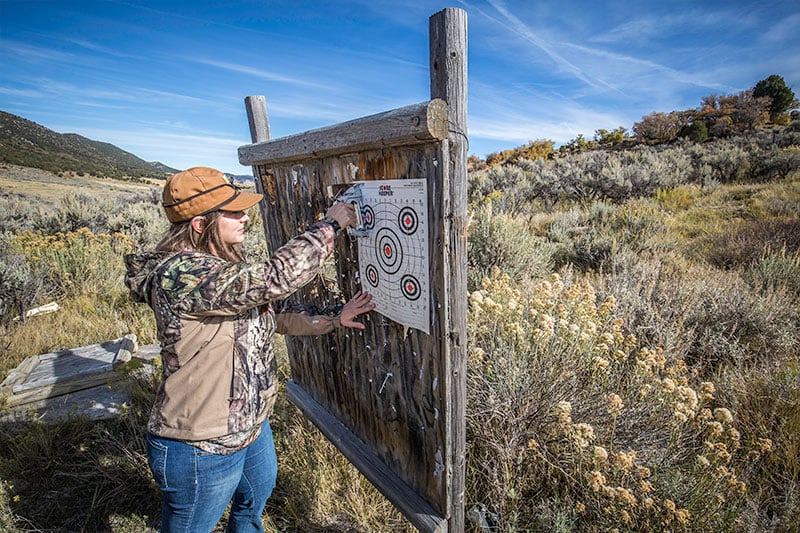
The other great thing about punching paper at the 100-yard range is that it builds confidence in a new shooter. My wife, for example, could see exactly where the shot hit and understood how important proper mechanics are. Familiarity breeds confidence, so the more range time you can get in before the season, the more confident a new shooter will be when a game animal is on the line. For more practice tips, watch this quick video to sight in a rifle in two shots and print these free rifle targets to get some practice with 25-yd and 50-yd ranges and build up to 100-yd.
Make it a Date
Instead of rushing through range day, it’s important to set aside plenty of time—at least an afternoon—to walk through each step of the process with a new female shooter. My wife and I made it a date and had someone watch the boys, which made a day at the range all that much more relaxed and enjoyable. Especially if it’s a woman’s first time shooting, the worst thing you can do is think three shots on paper is going to adequately prepare her for a hunting situation in the field, so carve out a block of time from your schedule and move slowly through each step. Take time to patiently and fully answer whatever questions she will have.
Practice Like You Hunt
Shooting from the bench is great for building familiarity with a rifle and working on general mechanics, but it’s pretty lousy at replicating what first-time female hunters will face in the field. As a result, you must work through field shooting positions like sitting, kneeling, and standing. Since each person’s body is built and functions differently, working through shooting positions will help her discover which she’s most comfortable and confident with. Practicing these positions builds muscle memory and helps eliminate indecision when it’s gone time.
If you’ve got the space and budget, it’s also helpful to set up steel targets—I use moveable targets from ShootSteel.com—at varying distances and walk through a timed “field course” with your lady friend. After you’ve set up a course, practice spotting targets, ranging for distance and executing a shot from field positions or with shooting sticks in a reasonable manner of time.
Shooting Aids
One of the most common mistakes new shooters make is thinking great marksmen don’t rely on shooting aids. On the contrary, a crafty hunter will utilize every element in the environment around him to stabilize and execute the shot. This includes bracing your shot with a tree, rock, pack, or, my personal favorite, a sling. Most people don’t realize that more than just a carrying device, even a basic sling can be wrapped around your support arm to stabilize a shot from sitting, kneeling, or standing positions. Even better, a safari or Ching sling is specifically designed to fit around your triceps for added support. If you’re taking a new female hunter afield, a quality sling is an absolute must.
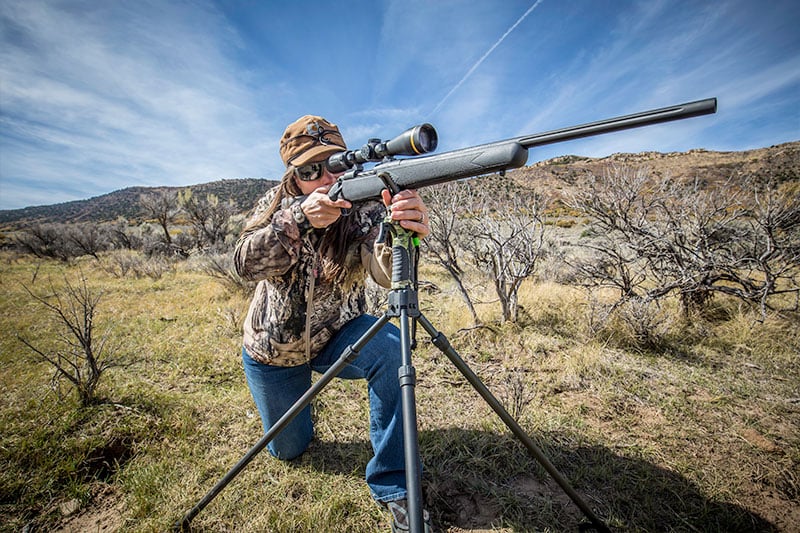
Similarly, one of the most useful tools in my gear arsenal is a good set of shooting sticks. My personal and current favorite is the Primos Gen 2 Trigger Stick Tripod, which is one of the most stable and rapidly adjustable sets of sticks I’ve used. Not only does it double as a sturdy walking stick or tripod for a camera, but the press of a trigger also extends or shortens the legs to adjust to any terrain or height. I wouldn’t even think about taking to the field without a good set of sticks.
Finally, Chillax
It’s not a good idea to introduce someone to hunting or shooting in a pressure-packed, stress-laden, physically exhausting type of setting. I like the extreme adventure of packing in 47 miles with all my gear on my back and the euphoric feeling of complete and utter exhaustion, but my wife would hate the same experience. Instead, our first elk hunt was from the comfort of an outfitter tent, in the early season when it’s warmer, with hunting spots that were relatively easy to get to. This allowed us to get up a little later, eat breakfast at a reasonable hour and enjoy plenty of leisure time around camp. It seemed pretty laid back for my tastes, but it made hunting an experience my wife could enjoy and wanted to replicate. That, in the end, was the ultimate goal of the hunt.
About the Author



